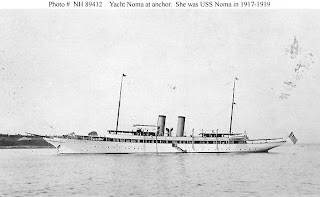
Figure 1: USS Tide (AM-125) underway at sea, circa 1943-1944. This photograph was retouched by wartime censors who removed the radar antenna atop the ship's mast. Official U.S. Navy Photograph, now in the collections of the National Archives. Click on photograph for larger image.

Figure 2: USS Tide underway at sea, 15 June 1943. Official U.S. Navy Photograph, now in the collections of the National Archives. Click on photograph for larger image.

Figure 3: USS Tide sinking soon after hitting a mine off "Utah" Beach on 7 June 1944, during the Normandy landings. Note her broken back, with smoke pouring from amidships. Official U.S. Navy Photograph, now in the collections of the National Archives. Click on photograph for larger image.

Figure 4: USS Tide sinking soon after hitting a mine off "Utah" Beach during the Normandy landings, 7 June 1944. USS Pheasant (AM-61) is standing by off Tide's bow. Official U.S. Navy Photograph, now in the collections of the National Archives. Click on photograph for larger image.

Figure 5: USS Tide sinking off "Utah" Beach after striking a mine during the Normandy invasion, 7 June 1944. USS PT-509 and USS Pheasant (AM-61) are standing by. Photographed from USS Threat (AM-124). Official U.S. Navy Photograph, now in the collections of the National Archives. Click on photograph for larger image.
The 890-ton USS Tide (AM-125) was an Auk class minesweeper that was built at the Savannah Machinery and Foundry Company in Savannah, Georgia. The ship was launched on 7 September 1942 and was commissioned on 9 May 1943. The ship was approximately 221 feet long and 32 feet wide, had a speed of 18 knots and carried a crew of 105 officers and men. The Tide was armed with two 3-inch guns, four 20-mm cannons and depth charges.
After a shakedown cruise off Key West, Florida, and Norfolk, Virginia, the Tide joined its first trans-Atlantic convoy to North Africa. While in this convoy, the Tide accidentally hit the infantry landing craft LCI-267 on 17 July 1943. The Tide suffered some damage but the crew was able to repair it at sea. The Tide reached Casablanca in North Africa on 18 July but was quickly ordered to help escort another convoy back to the United States. On 29 July, while escorting this convoy, the Tide acquired a sonar contact indicating that a submarine was in the area. After dropping some depth charges, an oil slick was spotted but there was no further indication or evidence that a submarine had been sunk. The Tide reached New York on 9 August and remained on the East Coast until 30 September. In October and November, the Tide made another trans-Atlantic crossing and returned to New York on 25 November 1943.
In December 1943, the Tide took part in naval exercises off the coast of Maine and was assigned to some coastal convoys in January. On 25 January 1944, the Tide left Charleston, South Carolina, for England via a very long route that took her to Bermuda, then the Azores, and finally to Milford Haven, England, on 10 March. She spent the rest of the month based at Falmouth. In April and May, the Tide assisted in escorting convoys off the coast of Britain and joined exercises with Royal Navy minesweepers in preparation for D-Day, the Allied invasion of Europe.
On 5 June 1944, the Tide headed for France as part of “Minesweeper Squadron A,” which was assigned to “Utah” beach. As the minesweepers neared the beaches ahead of the landing forces, a member of the squadron, the USS Osprey (AM-56), struck a German mine and sank. But the rest of the members of Minesweeper Squadron A reached Normandy and they swept channels near the beaches for the fire-support ships that were coming to bombard the coast. The minesweepers continued their work throughout the day on 6 June. On the night of 6 June and into the early morning of 7 June, the Tide and several other vessels guarded the Carentan Estuary to prevent German E-boats from attacking the landing ships.
But at 0940 on the morning of 7 June, while sweeping an area between St. Marcauf and Barfleur, the USS Tide struck a mine and the explosion literally lifted the ship out of the water. The explosion caused catastrophic damage to the ship by breaking her back, blasting an enormous hole in the bottom of the ship, and tearing away all of her bulkheads below the waterline. Water poured into the ship and the Tide began to sink.
The Tide’s captain, Lt. Commander Allard B. Heywood, USNR, was severely injured and died soon after handing over command of the ship to the Executive Officer, Lt. Commander George Crane. The explosion killed at least eight people, but many of the remaining crewmembers were also injured, some severely. Several ships came to the Tide’s assistance, including the USS Pheasant (AM-61), the USS Threat (AM-124), and the USS Swift (AM-122). Lt. Commander Crane transferred the survivors to the other ships as fire began to consume what was left of the minesweeper. Crane was the last man to leave the Tide and, shortly after his departure, the Swift attempted to tow the Tide to safety. But the strain caused by the towline was too great for the shattered minesweeper and the Tide soon broke in half. Both pieces of the ship quickly sank after that. In all, 97 men were rescued from the Tide.
Few people today know that minesweepers even exist, let alone how incredibly dangerous their job really is. Minesweepers have never received the recognition they deserve and the mines that exist today are much more sophisticated, making them even more dangerous. It takes a special breed of seaman to sail on board these small ships and we certainly are fortunate to have them, both then and now.


























